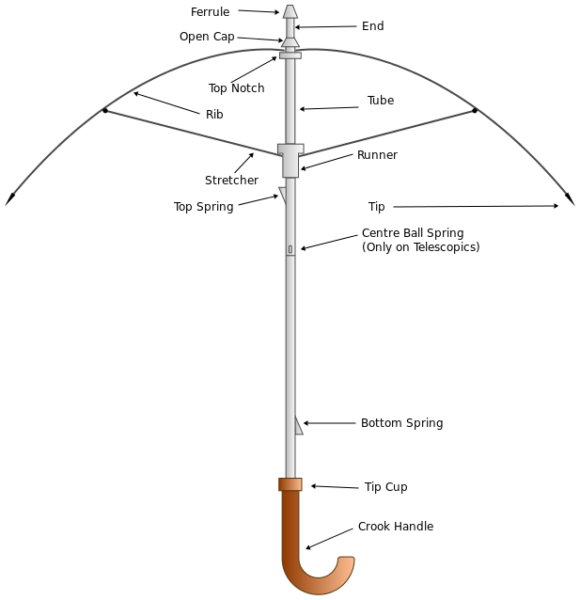What? You want me to 3D print an umbrella?
617px-parts_of_an_umbrella-svg
cg_visulisation1-1024x480
One of the most enjoyable aspects of running 3D printing training courses is coming up with suitable challenges for the students, both children and adults. The model should have a proper mix of simplicity and difficulty. It should be common enough so the students already have an idea what it should look like. But it should also have some features that should stretch their imagination as well. This week, I realized that the ubiquitous umbrella would be a great 3D modeling and 3D printing challenge.How can we design and 3D print an umbrella that can open and close right off the printer? Looking at the illustration, how do we control the 3D printer in order to create just enough space between the Runner and the Tube? What hinge should we use to connect the Stretcher and the Rib as well as the Rib to the Top Notch? How would the Top Spring work (if we can’t use a metal spring)? Can we find a substitute for it? What material can we use for the canvas that can block out the rain?But most importantly, as I tell all my students, as we think through the process of creating anything, it is even possible to improve on the umbrella's design, which has been around for a very long, 25 hundred years?What's on Thingaverse.com?A quick check on Thingaverse.com shows surprisingly few 3D models for umbrellas. This first one is by Zomboe, which he admits can use some improvements such as finding a way to hold up the Runner (which he calls a Slider). And of course, it also needs a proper canvas to repel water.This second model by Austin Reid, uses Ninja Flex filament as the canvas. It seems to have some potential but it’s unclear because it’s designed as a toy.The rest of the umbrella models on Thingaverse don’t fold.A first radical change in 2500 yearsMoving away from Thingaverse, I found the Kazbrella, by Designer Jenan Kazim, who used 3D printing technology to prototype and refine the parts until he reached the precision necessary to develop his very unique inverted umbrella. Kazim actually answered my question above about whether or not 3D printing can improve on the umbrella’s original design. It's a definitive yes!Returning to the more traditional umbrella, do you think you (and your children) want to try creating your own umbrella? I think it’s a great mental exercise! Tell me if you can do it!




